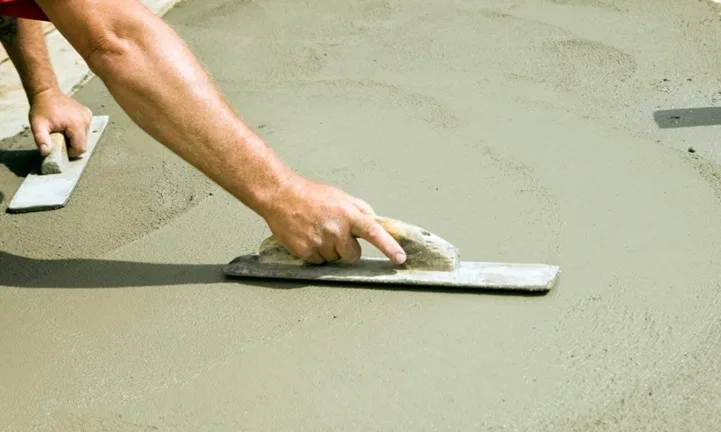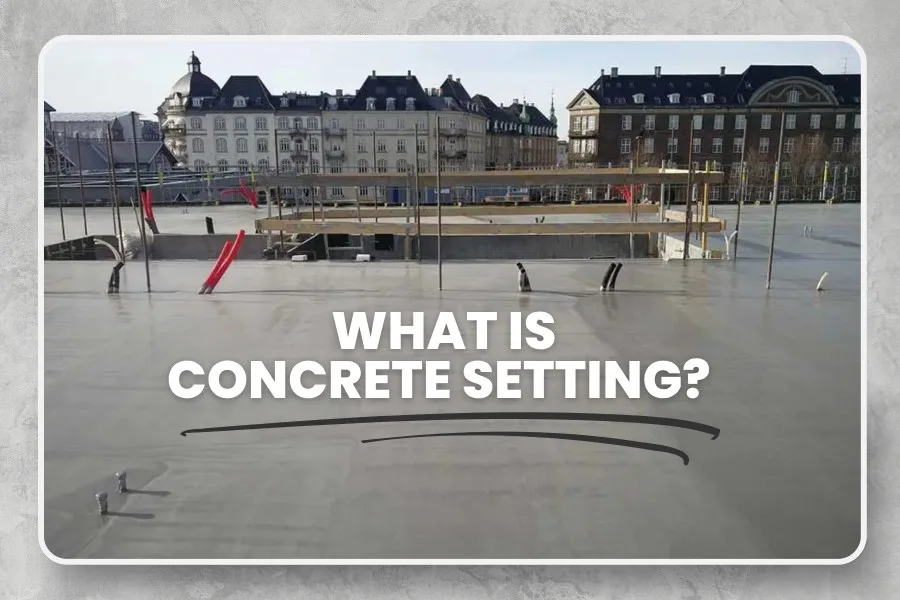Introduction
Concrete setting is one of the most basic but overlooked steps in construction. This is when we transform concrete from a plastic, free-flowing mix to a solid, stiff (load-bearing) material.
Setting isn’t instantaneous. This crucial transition occurs over time, subject to a number of factors that are both environmental and chemical.
Planning and executing successful concrete work requires that you know when the concrete begins to set, how long it takes to set, and what factors can affect that time.
Table of Contents
In this guide, we will discuss what concrete setting means, why it is important to monitor, what factors will affect it, and finally, look at how smart sensors and some special admixtures can help control and hopefully optimize, setting for the best results.
Why It Is Important to Know the Setting Time
Knowing how long your concrete will remain workable – the initial setting time – and when it will become too firm to adjust – the final setting time – is crucial for good planning.
You will use the initial setting time to mix, transport, and place the concrete into an application before it starts to stiffen. This is especially useful on large worksites, or in hot weather when you can get set too early.
The final setting time, however, tells you when the concrete is hard enough to start finishing operations, but also far enough on the timeline that you would be compromising the concrete! Placing any load or finish on it after this point has been documented to ruin the internal integrity of the structure.
Ideally, you want a comfortable middle ground. The concrete should remain workable long enough to allow the contractor to place it and screed it reasonably flat, yet it shouldn’t take so long to set that it pushes back finishing operations or the overall project schedule.
When Does Concrete Setting Actually Begin?
Concrete setting does not start when water is added to it. Rather, the sequence of events exhibits a predictable pattern that is directly controlled by cement hydration, which is the sequence of chemical reactions between water and cement. Concretely, there are usually five steps:
• Mixing – Water is added to cement and aggregates.
• Dormant – The concrete remains in a fluid state; the internal structure hasn’t changed yet.
• Acceleration phase – The exothermic reaction begins to create heat, and the setting begins. The initial setting time occurs in this time frame.
• Deceleration phase – The concrete continues to stiffen, eventually hardening. Final setting time falls within this phase of stiffening/hardening.
• Hardening – Over several days to weeks and until the end of the month, the concrete gains strength from continued hydration.
By understanding this timeline you will know when you should start planning your formwork removal, when to apply your finishing, or when you can start curing.

Factors that Affect Concrete Setting Time
There are several factors that can speed up the setting of the concrete or make it to set slower. Here are the main factors:
1. Water-Cement Ratio
The amount of water against the cement has a big impact on how fast or slow the concrete will set.
Low water-cement ratio: It speeds up the setting time but may make it slightly harder to work with.
High water-cement ratio: It slows the setting time and makes it easier to handle. Too much water could possibly weaken the final product.
The sweet spot is finding the balance that allows you to work with the concrete without sacrificing the integrity of the finished product.
2. Temperature
Concrete behaves differently based on surrounding temperatures:
High temperatures: speed up hydration and lead to faster setting times, but it may sacrifice the final strength, and surface shrinkage cracking may occur.
Low Temperatures: Slows the hydration process, resulting in slower setting and slower strength gain. In extreme cold, concrete may not set at all unless exterior heat is applied or specialty curing additives are introduced.
Because of this, temperature management and monitoring are critical to managing a project on the job site.
3. Admixtures
Concrete admixtures are chemicals that change the properties of concrete, namely the set time. There are two particular set times as it relates to admixtures.
• Accelerators speed up the set time and should be used when concreting in cold weather.
• Retarders slow down the set time so there is more time to place and finish. For instance, this is useful in hot conditions or large pours.
Water reducers and superplasticizers could indirectly impact set time by modifying workability (slump) and hydration rates.
How to Test Concrete Set Times?
There are 2 set time testing approaches that we will get into:
1. Setting Time of Cement (for laboratory use only)
This test is of cement and water, which is an important finding for cement manufacturers, but is of little use for the world of aggregates and admixtures.
2. Setting Time of Concrete (for real-world use)
This is what is most relevant to field conditions. The accepted method of testing setting time is:
ASTM C403 uses penetration resistance for assessing how the concrete is gaining stiffness over time.
This test can be valuable information but is time-consuming, needs skilled generation of results and appropriate equipment, which is not common on-site.
Monitoring Devices: A Smarter Way to Track Concrete Setting
The construction industry is experiencing a new evolution in its use of technology, and smart monitoring is one component of the technological explosion gaining traction in the construction space.
Wireless sensors such as the Maturix will forever change the way concrete is monitored, as these sensors can often be embedded deep within the concrete itself and give owners and contractors real-time indications of the temperature of the concrete and its strength development. There are plenty of advantages to smart monitoring, including:
Real-Time Monitoring: You can literally see how fast the concrete is curing from your computer or phone while on the job site or off.
Remote Monitoring: You do not have to be on site to see results.
Better and Informed Decision Making: Knowing exactly what is happening with the concrete allows you to make accurate decisions on when to start or stop different trades, with less guesswork.
Automatic Record Keeping/Documentation: Technology that monitors concrete sets offers lots of opportunities for compliance and quality assurance, and safety audits.
All of this information allows project managers and engineers to schedule their work and projects in a more efficient manner and not worry about potential issues that can arise from welcoming in other trades at the wrong time.

Conclusion
Concrete setting may seem like a simple process, but it is one of the most important stages of any concrete job.
Whether you are pouring a small patio or a high-rise building foundation, understanding how concrete sets, when it sets, and why it sets is needed to build a quality and durable concrete structure.
There are countless factors to consider, including those associated with the water-cement ratio, ambient temperature and use of admixtures, and all of them affect how fast or slow your concrete sets.
Although lab tests will provide some information, on-site monitoring tools such as Maturix will provide the concrete owner and contractor with many practical solutions, in real time.
In the end, a well-managed setting process leads to stronger, longer-lasting concrete—and fewer headaches during and after construction.
Sandip Agrawal, Polymer Engineer and MD of Sakshi Chem Sciences Pvt. Ltd., leads innovation in construction chemicals, shuttering oils, and industrial lubricants. With expertise in polymer science and eco-friendly solutions, he drives R&D and sustainable advancements, ensuring high-performance products for India and global markets.


